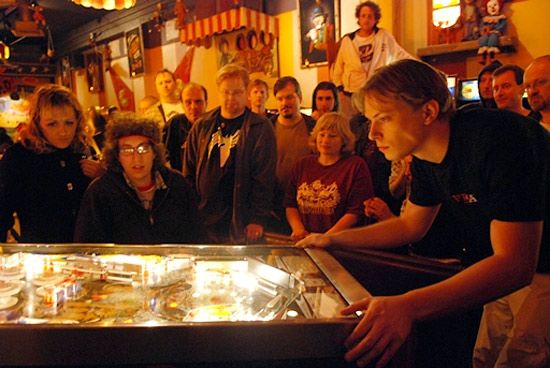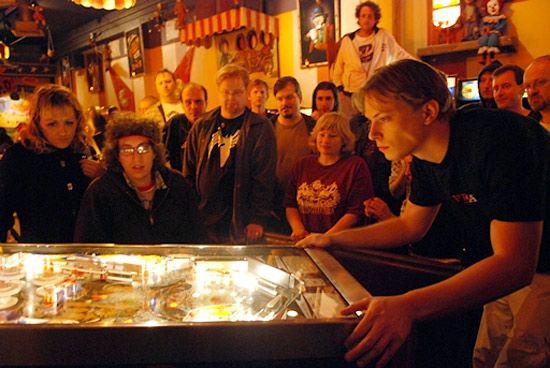pinball
The History of Pinball in Australia
The History of Pinball in Australia: From Classic to Modern Machines has some games in history that have captured the imagination, skill, and joy of players quite like pinball. With its flashing lights, ringing bells, and satisfying flipper action, pinball has remained an enduring symbol of arcade culture across the world — and Australia is no exception. From smoky arcades in the 1950s to sleek, high-tech gaming rooms today, the journey of pinball in Australia is a story of innovation, resilience, and nostalgia.
This post explores the fascinating evolution of pinball in Australia, tracing its rise from the golden age of mechanical machines to the sophisticated digital marvels that thrill a new generation of players today.

Early Beginnings: Pinball’s Arrival in Australia
Concerning the history of pinball in Australia, the Pinball first made its way to Australia in the 1930s and 1940s, inspired by early American designs. The earliest machines were bagatelle-style tables, which had no flippers — players launched a ball and relied on gravity and luck to score points.
During this era, the machines were coin-operated but purely mechanical. Their simple gameplay and the thrill of watching the ball bounce through pins made them an instant hit in pubs, amusement halls, and seaside arcades across cities like Sydney, Melbourne, and Adelaide.
However, early pinball faced a rocky start. Like in the United States, some local councils viewed pinball as a form of gambling rather than skill. Despite these challenges, Australian players continued to embrace the game, setting the stage for a booming arcade culture in the decades to come.
The 1950s–1970s: The Golden Age of Electromechanical Pinball
The post-war years marked the golden age of pinball in Australia. The 1950s brought electromechanical (EM) machines featuring flippers, bumpers, scoring reels, and flashing lights. These innovations transformed pinball into a game of skill and reflexes rather than pure chance.
American manufacturers like Bally, Williams, and Gottlieb dominated the market. Distributors began importing these machines to Australia in large numbers, supplying hotels, milk bars, and arcades.
Popular titles of the time included classics such as Captain Fantastic, Fireball, and Eight Ball Deluxe. Australian players loved their mix of sound, light, and excitement. The 1960s and 1970s were truly magical decades for pinball fans — every corner arcade seemed alive with the clatter of coins and the distinctive “ding” of a high score.
Pinball also became part of Australian pop culture. Machines could be found everywhere — from Sydney’s Luna Park to regional pubs in Queensland and Tasmania. It was during this era that many Australians played their first pinball game, sparking a lifelong love for the hobby.
The 1980s: The Digital Revolution and Competition from Video Games
By the early 1980s, solid-state technology revolutionized the pinball industry. Mechanical score reels gave way to digital displays, and soundboards replaced bells and chimes with synthesized music and voices.
Manufacturers introduced deeper rule sets, themed storylines, and improved durability. Iconic machines like Black Knight, High Speed, and Fathom marked the arrival of modern pinball design.
However, the rise of video games like Pac-Man and Space Invaders brought fierce competition. Many arcades replaced pinball machines with video cabinets to keep up with the new gaming craze. Yet, pinball endured — thanks to loyal fans who appreciated its tactile, physical gameplay.
In Australia, local distributors and arcade operators kept the scene alive. Sydney and Melbourne became hotspots for arcade culture, blending pinball and video gaming into a shared experience that defined the 1980s entertainment era.
The 1990s: The Comeback of Themed Machines
If the 1980s tested pinball’s endurance, the 1990s proved its power to reinvent itself. This decade saw a surge in themed pinball machines that captured pop culture icons — from movies and music to sports and television.
Games like The Addams Family (1992), Twilight Zone (1993), Indiana Jones, and Jurassic Park became global sensations. In Australia, these machines were especially popular in pubs, bowling alleys, and gaming centers.
These new machines featured dot-matrix displays (DMDs), multiple playfields, and advanced sound effects. Players could now follow storylines, unlock modes, and experience dynamic challenges.
During this time, pinball collecting also started gaining traction in Australia. Enthusiasts began restoring and trading vintage machines, sparking the early roots of today’s thriving collector community.
The 2000s: Decline and Nostalgic Revival
The early 2000s were a mixed period for pinball. The global market saw fewer new releases, and many arcades closed as gaming moved online. But in Australia, nostalgia for retro entertainment began to resurface.
Dedicated hobbyists and small operators started restoring classic pinball machines and organizing community events. Pinball tournaments and exhibitions popped up in major cities, reigniting interest among both older and younger generations.
The emergence of home game rooms also fueled demand. Families and collectors began purchasing pinball machines for private use, leading to a steady increase in sales.
Companies like Stern Pinball became the torchbearers of modern manufacturing, producing machines with better technology, licensed themes, and long-lasting build quality. Titles like The Simpsons Pinball Party and Lord of the Rings kept the Australian pinball scene alive and buzzing.
The 2010s–Present: Modern Machines and Digital Innovation
Pinball entered a new renaissance in the 2010s and beyond, blending tradition with cutting-edge technology. Manufacturers such as Stern, Jersey Jack Pinball, and Spooky Pinball introduced stunning machines equipped with HD screens, RGB lighting, and Wi-Fi connectivity.
These modern marvels aren’t just games — they’re works of art. Machines like AC/DC Premium, Godzilla, and Foo Fighters became collector’s items in Australia.
At the same time, digital pinball and hybrid platforms brought the experience to virtual formats. Players could now enjoy realistic physics and gameplay on tablets, consoles, and digital arcades. However, most purists agree that nothing replaces the tactile thrill of a real pinball machine.
Pinball in Australia Today
Today, pinball in Australia is thriving once again. From Canberra to Perth, enthusiasts gather for tournaments, clubs, and events that celebrate the art of the silver ball.
Businesses like Pinball State are at the forefront of this revival. Offering pinball machines for sale in Australia, arcade games, and expert restoration services, Pinball State brings classic fun into modern homes and businesses.
Their wide range of machines — from vintage electromechanical classics to modern digital powerhouses — appeals to both collectors and first-time buyers. Whether you want to relive your childhood memories or introduce your kids to the joy of pinball, Pinball State makes it possible with quality machines, nationwide delivery, and expert advice.
Why Pinball Remains Popular
Even after nearly a century, pinball continues to attract fans of all ages. Its enduring popularity comes down to several timeless qualities:
- Tactile Interaction: The flipper action and moving parts provide a hands-on experience no digital game can match.
- Skill and Strategy: Each game is a blend of reflexes, timing, and decision-making.
- Nostalgia: Pinball connects generations — parents who played as teens can now share the experience with their kids.
- Collectability: Vintage machines have become prized possessions for hobbyists and investors alike.
- Community: Pinball fosters connection. From competitions to local meet-ups, it’s a hobby that brings people together.
The Future of Pinball in Australia
As technology evolves, so too does pinball. The future promises even smarter machines with online leaderboards, customizable lighting, and cloud-based updates. In Australia, the growing interest in retro entertainment ensures pinball’s legacy remains strong.
New bars and entertainment venues are incorporating pinball machines as part of their appeal, creating spaces where people can play, socialize, and relive the magic. For collectors, the combination of artistry, craftsmanship, and nostalgia makes pinball an investment in joy.
With passionate retailers like Pinball State supporting the industry, Australia’s pinball future looks brighter than ever.
Final Thoughts
From humble mechanical beginnings to today’s dazzling digital designs, the history of pinball in Australia tells a story of evolution, passion, and community. It’s a game that transcends generations, bringing joy to players young and old.
Whether you’re reminiscing about your favorite machine from decades ago or discovering pinball for the first time, one thing is certain — the spirit of pinball is alive and thriving Down Under.
If you’re ready to experience this timeless game in your own home, explore the range of pinball machines for sale in Australia at Pinball State. From restored classics to the latest models, you’ll find everything you need to bring the excitement of the arcade right to your doorstep The History of Pinball in Australia: From Classic to Modern Machines can be found at Pinball State Australia the number one place for all Pinball Machines for sale an arcade games

